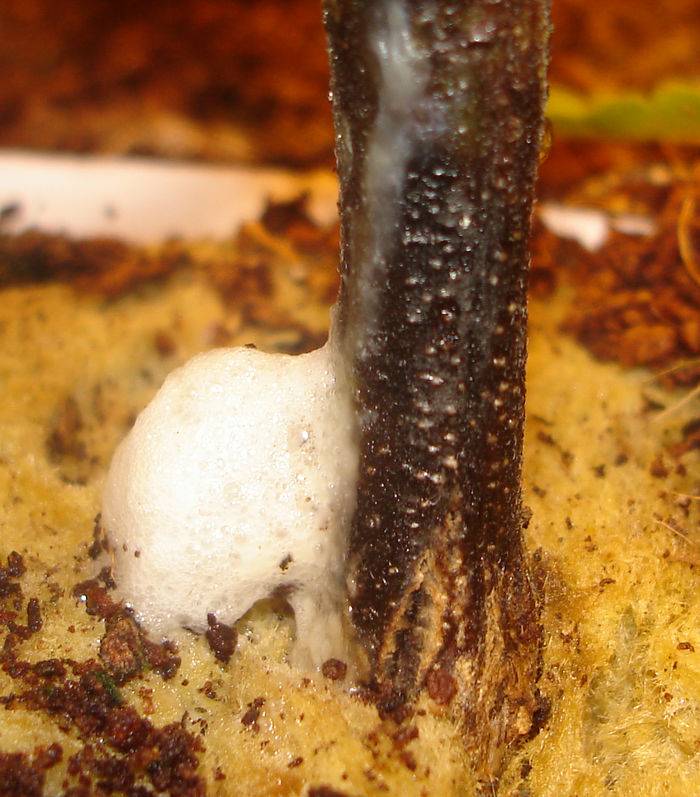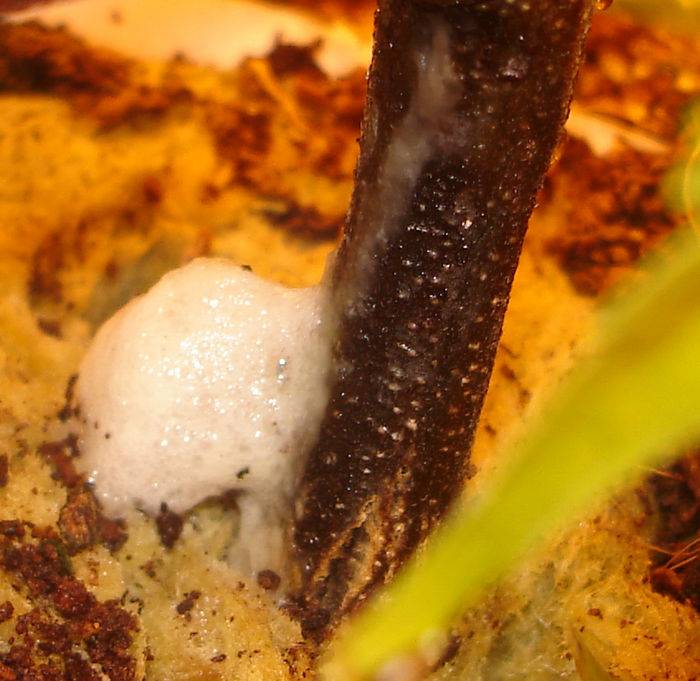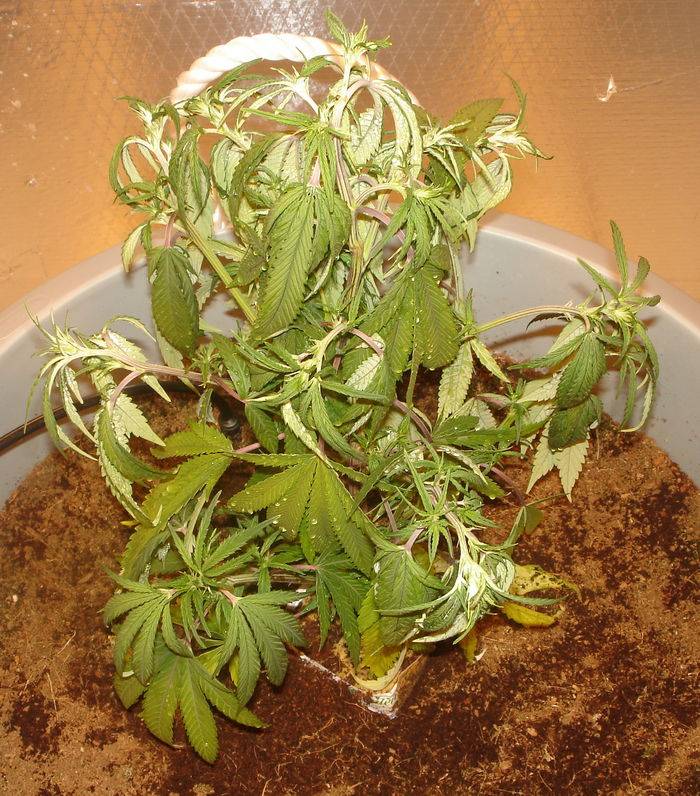well i have a plant that started looking a bit sad.. as the day went on it got worse so i took a closer look and found this..


shes looking this

while the rest are still looking good as of right now..

Thanks to PureSativa420, he found this article.
anyone ever had this happen to them? if so what did you do n what was the outcome?
thanks


shes looking this

while the rest are still looking good as of right now..

Thanks to PureSativa420, he found this article.
This is called wetwood or slime flux.
The bacterial wetwood is found in the roots, branches, and trunks. The cause of the condition is an infection of the heartwood caused by several common types of anaerobic soil bacteria (bacteria to which oxygen is toxic). These bacteria feed on substances in the wood, releasing fatty acids, methane and carbon dioxide gases. The fatty acids go rancid leaving the wood of the tree water soaked and foul smelling.
The gaseous by-products create a hydraulic pressure which forces liquids out of cracks in the bark, branch crotches and pruning wounds. These fluids will turn brown once they come in contact with air, and leave a slimy, fetid ooze dripping down the bark. The liquid raises the pH of the tree making the interior more alkaline. The bacteria do not cause any wood decay, and infected wood is also very resistant to decay.
There is no satisfactory control for bacterial wet wood. It does cause die back of branches, but the raised pH prevents decay fungi from rotting out the centre of the tree.
Sap may continue to ooze for several weeks or months, but usually it eventually stops with no treatment and no apparent damage to the tree. This slime flux may be triggered by heat, drought and other stress.
There is no curative or preventive measures for slime flux except to maintain trees in a general good state of vigor and minimize wounds and injuries. More damage can be done to the tree in attempting to cure slime flux than the flux will do alone. If there is loose or dead bark in the slime flux area, remove all of the loose bark and allow the area to dry. Do not apply a wound dressing. A solution of 10% sodium hypochlorite (1 part household bleach to 9 parts water) will help surface disinfect the area around the damaged area. This will help discourage insect attraction and help restrict damage to the bark below the damaged oozing area.
anyone ever had this happen to them? if so what did you do n what was the outcome?
thanks

Last edited:



